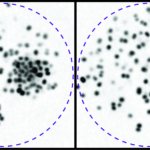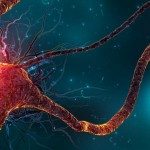M1/M2 internship: Single particle tracking with structured illumination
Super-resolved localization microscopy and single particle tracking (SPT) have become stable techniques of molecular biophysics, and are providing unprecedented insights into the spatio-temporal organization and biomolecular dynamics both in vitro and in situ1. Structured illumination has emerged as a method for increasing the precision of the localization of stationary emittors2. Since structured illumination increases the localization accuracy, it could in principle also be applied when tracking the motion of single particles to increase the information that can be extracted about their dynamics3. However, structured illumination introduces new challenges to the problem of inference from SPT data since the varying illumination field introduces spatial variations in the localization precision and motion blur of recorded particles.
The goal of this internship is to extend likelihood-based inference for SPT data to structured illumination and investigate numerically when and to which extent structured illumination can increase the precision of inferred SPT models. The main technical difficulty we encounter is that inference necessitates simultaneous inference of particle localizations and model parameters, which can lead to substantial bias. To overcome this, the successful applicant is expected to develop a Markov-chain-Monte-Carlo (MCMC) and expectation-maximization (EM) based algorithm for principled likelihood-based inference4.
References
- Lee, A., et al. Unraveling the thousand word picture: an introduction to super-resolution data analysis. Chemical reviews 117, 7276-7330 (2017)
- Schmidt, M., et al. Camera-based localization microscopy optimized with calibrated structured illumination. Communications Physics 4, 41 (2021)
- Vestergaard, C.L. Optimizing Experimental Parameters for Tracking of Diffusing Particles. Physical Review E 94, 1–17 (2016)
- Lin, Y. & Andersson, S.B. Expectation maximization based framework for joint localization and parameter estimation in single particle tracking from segmented images. PLoS ONE 16, e0243115
Scientific or technical background required for work program
The successful intern should have training in one of the following fields: statistical or condensed matter physics, applied mathematics, or statistics.
Some fluency in Python and numerical simulations is expected.
Contacts
christian.vestergaard@pasteur.fr & jean-baptiste.masson@pasteur.fr







